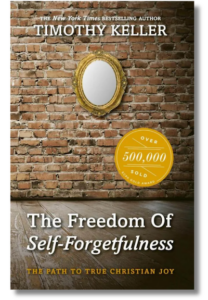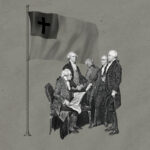On Monday The New York Times ran an op-ed by journalist Katherine Stewart claiming attacks on “government schools” are rooted in “American slavery, Jim Crow-era segregation, anti-Catholic sentiment and a particular form of Christian fundamentalism—and those roots are still visible today.” While Stewart does not use the term “homeschool” in her op-ed, she implies that parents who choose to educate their children outside of the public school system participate in a culture that promotes racism and theonomy. (For direct rebuttals to Stewart, see this article by Andrew T. Walker and this one by David French.)
The real history of opposition to “government schools” is more interesting and varied than Stewart claims. This is espcially true for the form known as “homeschooling.” Here are nine things you should know about the history of this educational movement:
1. Homeschooling is the education of school-age children (ages 5 to 17) in a grade equivalent to at least kindergarten and not higher than 12th grade who receive instruction at home instead of at a public or private school either all or most of the time. Prior to the 1990s there were estimated to be only a few hundred thousands homeschool students in the United States. In 2012, the latest date for which statistics are available, the number had grown to estimated 1.8 million, accounting for approximately 3 percent of the school-age population.
2. Although many early homeschooling families were Protestant Christians, the original movement itself was ideologically diverse and not inherently religious. In the early years of the movement the most common trait homeschooling families had in common was an embrace of the unconventional and a willingness to be seen as nonconformists in relation to mainstream culture. As sociologist Mitchell L. Stevens says, the early members of the movement included “anarchists, practicing witches, macrobiotic vegetarians, devotees of family beds, Orthodox Jews, and a large number of fundamentalist Christians.” Prior to the 1970s, various small subcultures within American—including a homeschooling faction lead by the theonomist Rousas John Rushdoony—operated independently and rarely intermingled. But that began to change in the 1970s, and the beginning of the modern homeschooling movement can be traced back to the influence of two men: John Holt, on the secular left, and Raymond Moore, on the religious right.
3. A former elementary teacher, the liberal Holt was a proponent of nontraditional teaching methods, such as “unschoooling,” a laissez faire approach to home-based education he called “learning by living.” Holt’s approach became popular with those who had embraced the values of the 1960s counterculture and were starting families of their own. Holt published several influential books on education and the first homeschooling magazine in 1977. Growing Without Schooling ran for 24 years and, in the era before the internet, served as a resource and network for homeschooling families.
4. Raymond Moore, EdD, was as an employee at the U.S. Department of Education when he and his wife Dorothy, a reading specialist and former elementary school teacher, began researching questions about the effect of institutionalized schooling on young children. Their research led them to become interested in homeschooling and later proponents of the “Moore Formula” (study, manual work, home/community service). A devout Seventh-day Adventist, Moore wrote several books for Christian parents, including Better Late Than Early (1975), Home Grown Kids (1981), and Home-spun Schools (1982), that became influential on the early religious homeschooling movement.
5. Despite the fact the movement was originally diverse, sociologists have identified three factors that made homeschooling particularly popular within conservative Protestant and evangelical circles: (1) A deep base of potential support (about 25 percent of Americans at the time identified as conservative Protestants), (2) a tendency to promote the importance of domesticity and motherhood as a full-time vocation, and (3) an institutional framework (i.e., churches, Christian colleges, publishing houses) that provided organic support for the movement. As Stevens notes, these two factors “do much to explain why religious homeschool groups ultimately secured definitional control of home education despite the diverse ideological origins of the cause. Conservative Protestants simply had more potential recruits and organizational resources with which to fuel the project than did the educational radicals who followed John Holt’s early lead.”
6. The early homeschooling movement faced a major legal hurdle: compulsory education laws, which require children to attend a public or state-accredited private school for a certain period of time. Massachusetts became the first U.S. state to enact a compulsory education law in 1852, and Mississippi became the last state to pass such a law in 1917. For most of the remainder of the 20th century, homeschooling was considered a violation of these laws. In 1971, three Amish families challenged the Wisconsin compulsory education law claiming they had a right to educate their own children in alignment with their values. In the case of Wisconsin v. Yoder (1972) the Supreme Court ruled that under the First Amendment’s protection of the free exercise of religion, families could not be made to send their kids to public school if it “interfered with the practice of a legitimate religious belief.” Although this case provided a precedent for many legal challenges brought by homeschooling families, the Supreme Court has never directly ruled on the whether parents have a broad constitutional right to educate their children at home.
7. In 1983, Mike Farris and Mike Smith, attorneys who were also homeschooling fathers, founded the Home School Legal Defense Association (HSLDA) with the mission, “To preserve and advance the fundamental, God-given, constitutional right of parents and others legally responsible for their children to direct their education.” At the time of HSLDA’s founding, homeschooling was legal in only a few states, and homeschooling parents faced legal pressure to send their children to “government school.” HSLDA allowed families who paid a yearly membership fee of $100 to secure a legal defense against local and state educational system. In exchange, HSLDA paid all “attorney fees, expert witness costs, travel expenses, and all other court costs permissible by state law for us to pay.”
8. Prior to the early 1980s, homeschooling families had a difficult time winning legal challenges. The first significant court case to rule in favor of homeschooling was the New Jersey case of State vs. Massa (1967). But it took almost 20 years for other states to change their laws. Through the efforts of HSLDA and other legal advocates, though, homeschooling gradually gained legal recognition. By the middle of 1993, home schooling was finally legal in all 50 states.
9. Many homeschooing families continue to participate in public school activities. Currently, 28 states do not prevent homeschooled students from participating in public school interscholastic sports. And according to U.S. News and World Report, at least 15 more states are considering “Tim Tebow Laws”—named after the homeschooled athlete—that would allow homeschoolers access to school sports. Even with allowing homeschool student to participate, though, school districts save money because of homeschooling. Based on their participation numbers, homeschooling families are estimated to save their fellow taxpayers an estimated $22 billion annually.
Other posts in this series:
Eugenics • North Korea • Ramadan • Black Hebrew Israelites • Neil Gorsuch and Supreme Court Confirmations • International Women’s Day • Health Effects of Marijuana • J. R. R. Tolkien • Aleppo and the Syrian Crisis • Fidel Castro • C.S. Lewis • ESV Bible • Alzheimer’s Disease • Mother Teresa • The Opioid Epidemic • The Olympic Games • Physician-Assisted Suicide • Nuclear Weapons • China’s Cultural Revolution • Jehovah’s Witnesses • Harriet Tubman • Autism • Seventh-day Adventism • Justice Antonin Scalia (1936–2016) • Female Genital Mutilation • Orphans • Pastors • Global Persecution of Christians (2015 Edition) • Global Hunger • National Hispanic Heritage Month • Pope Francis • Refugees in America • Confederate Flag Controversy • Elisabeth Elliot • Animal Fighting • Mental Health • Prayer in the Bible • Same-sex Marriage • Genocide • Church Architecture • Auschwitz and Nazi Extermination Camps • Boko Haram • Adoption • Military Chaplains • Atheism • Intimate Partner Violence • Rabbinic Judaism • Hamas • Male Body Image Issues • Mormonism • Islam • Independence Day and the Declaration of Independence • Anglicanism • Transgenderism • Southern Baptist Convention • Surrogacy • John Calvin • The Rwandan Genocide • The Chronicles of Narnia • The Story of Noah • Fred Phelps and Westboro Baptist Church • Pimps and Sex Traffickers • Marriage in America • Black History Month • The Holocaust • Roe v. Wade • Poverty in America • Christmas • The Hobbit • Council of Trent • Halloween and Reformation Day • Casinos and Gambling • Prison Rape • 16th Street Baptist Church Bombing • Chemical Weapons • March on Washington • Duck Dynasty • Child Brides • Human Trafficking • Scopes Monkey Trial • Social Media • Supreme Court’s Same-Sex Marriage Cases • The Bible • Human Cloning • Pornography and the Brain • Planned Parenthood • Boston Marathon Bombing • Female Body Image Issues • Islamic State
Free eBook by Tim Keller: ‘The Freedom of Self-Forgetfulness’
 Imagine a life where you don’t feel inadequate, easily offended, desperate to prove yourself, or endlessly preoccupied with how you look to others. Imagine relishing, not resenting, the success of others. Living this way isn’t far-fetched. It’s actually guaranteed to believers, as they learn to receive God’s approval, rather than striving to earn it.
Imagine a life where you don’t feel inadequate, easily offended, desperate to prove yourself, or endlessly preoccupied with how you look to others. Imagine relishing, not resenting, the success of others. Living this way isn’t far-fetched. It’s actually guaranteed to believers, as they learn to receive God’s approval, rather than striving to earn it.
In Tim Keller’s short ebook, The Freedom of Self-Forgetfulness: The Path To True Christian Joy, he explains how to overcome the toxic tendencies of our age一not by diluting biblical truth or denying our differences一but by rooting our identity in Christ.
TGC is offering this Keller resource for free, so you can discover the “blessed rest” that only self-forgetfulness brings.


































